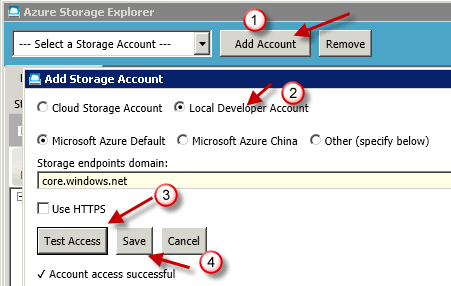

Our focus will be on the "Tables" section, which should be empty since no tables have been programmatically created yet. Here you can see three additional dropdown sections: After installing go ahead and start the Azure Storage Explorer, and in the left hand column navigator find the dropdown section labelled "Local & Attached" and then within that section find the secondary dropdown "Storage Accounts" and within the tertiary dropdown "(Emulator - Default Ports)" is where the resources, that we have not yet created, will be displayed. This application is available for Windows, Mac, and Linux machines. Next we'll need to download Azure Storage Explorer to interact with the emulated storage environment. The cmd window can be closed and the emulator will continue to run. This should open a cmd window that will indicate the emulator is running, and some helpful commands.

Otherwise, after installing, Windows users can search in the start menu for "azure storage emulator" and press enter to start the emulator.

If you aren't using windows, Azurite is an open source Azure storage API compatible server, and it is recommended by Microsoft to use.
AZURE STORAGE EMULATOR FOR MAC INSTALL
In order to save on development costs, instead of creating cloud resources, we can install the Azure Storage Emulator for development and testing.
AZURE STORAGE EMULATOR FOR MAC CODE
Please make sure the prerequisites are set up before running the example code that follows. Before developing with Azure Serverless Functions and Azure Table storage locally, there are some tools required to emulate Azure Storage and provide a run-time environment for the Node.js serverless functions.


 0 kommentar(er)
0 kommentar(er)
